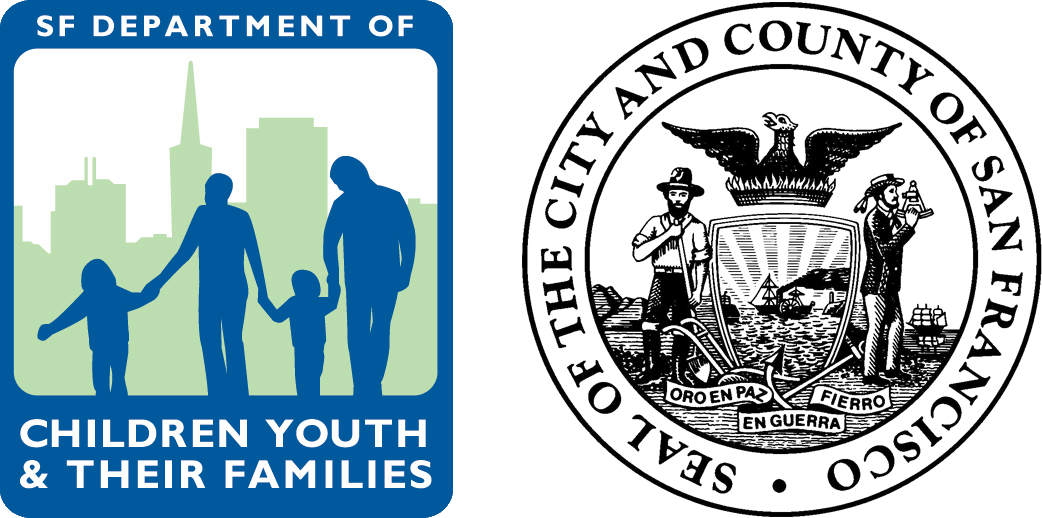Planning
Results and Indicators
As stewards of the Children and Youth Fund, DCYF seeks the most effective and equitable methods of determining the services that will best improve outcomes for children, youth, disconnected transitional age youth (TAY) and families, as well as how to best measure the impact of our investments.
In the fall of 2016, DCYF began using the Results‐Based Accountability (RBA) framework with the goal of implementing a clear and measurable tool to help ensure that the Children and Youth Fund investments will support positive results. The implementation of the RBA framework followed the completion of our Community Needs Assessment (CNA).
Based on the wealth of data and community input gathered through the CNA, DCYF identified four results that reflected the aspirations shared by children, youth, TAY and families in the CNA. Please see DCYF’s Services Allocation Plan (SAP) for more information on the development of results.
Children and youth are supported by nurturing families and communities
Children and youth are physically and emotionally healthy
Children and youth are ready to learn and succeed in school
Youth are ready for college, work and productive adulthood
With these vital results in mind, DCYF utilized the RBA framework to select 17 key population‐level indicators that we believe are strong markers of progress. These population‐level indicators will become a fundamental component of DCYF’s future evaluation efforts, offering a high level view of how the city is faring in each result area over time.
DCYF will continue to measure these indicators in order to hold ourselves and our City partners accountable for making positive progress. DCYF developed a scorecard to accompany each indicator that identifies the data trend line and racial/ethnic disparities, offers a brief history of relevant policy and practice shifts at the state and city level, and provides evidence-based resources aimed at improving outcomes associated with each indicator.
July 2018 Data
Children & youth are supported by nurturing families & communities
Indicator
Latest Data
Scorecards
Recent Trend
Number of Substantiated Child Maltreatment Cases per 1,000 Children
5.5
2016
from 10 in 2005
Percent of Families Who Report They Feel Engaged and Connected in Their Communities
Data Development Agenda
Historical Data Not Available
Percent of Youth Who Report They Feel Engaged and Connected in Their Communities
Data Development Agenda
Historical Data Not Available
Children and youth are physically and emotionally healthy
Indicator
Percent of Public School Students Who Are at a Healthy Weight
Latest Data
65%
of 5th Graders in 2016-17
Recent Trend
from 53% in 2010-11
Scorecards
Percent of Public School Students Who Are Physically Fit
74%
of 5th Graders in 2016-17
from 64% in 2010-11
Percent of SFUSD Students with Caring Adult Relationships in the School Environment
36%
of 7th Graders surveyed in 2015
from 31% in 2008
Percent of all San Francisco Youth Ages 10-18 Involved in the Juvenile Justice System
1.4%
2016
from 3% in 2010
Percent of Youth Ages 18-24 Who Are Arrested or Incarcerated
Data Development Agenda
Historical Data Not Available
Children and youth are ready to learn and succeed in school
Indicator
Percent of Kindergarteners Ready for School
Latest Data
62%
2015
Recent Trend
Historical Data Not Available
Scorecards
Percent of Public School 3rd Graders Above or Near State Standards in Reading
67%
2017
from 67% in 2015
Percent of SFUSD Elementary School Students Who Are Chronically Absent
14%
2016-17
from 10% in 2014-15
Percent of SFUSD 8th Graders Who Finish Middle School Ready for High School
62%
2015-16
from 63% in 2014-15
Percent of SFUSD Students With Positive Results in the Social Emotional Skills Areas Assessed by SFUSD
63%
of middle and high schoolers with positive results for Social Awareness in 2017
from 61% in 2016
Youth are ready for college, work & productive adulthood
Indicator
Percent of SFUSD Students Who Have Been Suspended
Latest Data
1.6%
2016-17
Recent Trend
from 3% in 2011-12
Scorecard
Percent of SFUSD Students Who Graduate High School within Four Years
87%
2015-16
from 82% in 2010-11
Percent of SFUSD High School Graduates Who Enroll in a Postsecondary Institution and Complete within Six Years
52%
SFUSD Class of 2011
from 47% for the Class of 2007
Percent of San Francisco 18-24 Year Olds Who Are either Enrolled in School or Working
93%
2016
from 88% in 2010
Please consider the following caveats when reviewing the scorecards:
Scorecards are intended to be a resource for information on the history of efforts related to specific population-level indicators and to provide information on national best and promising practices, scorecards are by no means comprehensive;
DCYF does not necessarily endorse or intend to fund any/all identified practices in these scorecards, please refer only to the RFP for guidance on programmatic requirements;
All scorecards include the most recent data available as of June 2017 for each indicator;
Links in the endnote citations were active at the time of publication, but due to the changing nature of internet sources they may not remain active, citations aim to provide enough information to locate the source if the link stops working;
DCYF intends to update these scorecards periodically as new information emerges and new data becomes available; and
Scorecards for three of the 17 indicators are currently on our data-development agenda because data for these indicators were not available at the time of publication. Indicators on the data development agenda are: percent of youth ages 18-24 who are arrested or incarcerated, percent of youth who report they feel engaged and connected in their communities, and percent of families who report they feel engaged and connected in their communities.

















